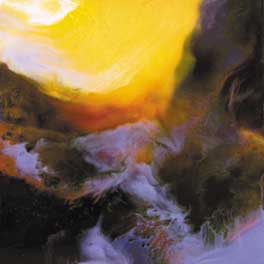
At The Well
beeswax on ceramic tile, 4 x 4"
collection of Mike and Suzanne James
Encaustic: from the ancient Greek encaustikos, meaning “to heat” or “to burn” refers to the method of painting with molten wax. Heat is used in every step of true encaustic painting. In 800 B.C., Homer wrote of warships in Troy painted with encaustic. Pliney the Elder wrote about encaustic artists from the 5th and 4th centuries B.C. More than 600 Fayam wax portraits created between 100 B.C. and 200 A.D. have survived from Greco-Roman Egypt.
Throughout the centuries, artists were lured from encaustic by the less labor-intensive painting methods of fresco, tempera, oil and later acrylic. In 1954, Jasper Johns, tired of waiting for oils to dry, began painting in wax, starting an encaustic revival and the history of contemporary encaustic. Modern equipment, materials and methods for working in wax favor the many thousands of contemporary encaustic painters.
Modern methods of working in encaustic offer many choices for heating wax to a molten state, including electric griddles, hot plates, and custom-made temperature-controlled hot palettes and containers. Encaustic’s special allure lies in its ability to be worked flat in 2D or sculptured in 3D. Wax can be built up in layers, carved, scribed, scraped, melted or otherwise altered at any stage of the creative process. Mediums include purified and natural beeswax, sculpturally conducive microcrystalline, common paraffin and combinations of all, each formula affording specific melting points and painterly characteristics.
Molten wax, with damar resin crystals for hardness, can be used alone or colored with pigments, and can be brushed, daubed, poured, drizzled, dripped, even sprayed, offering an endless array of applications to suit any modern encaustic painter. Contemporary encaustic artists work on paper, wood, plexiglass, marble, stone, ceramics, and other suitably prepared surfaces in their individual technique and style.
suggested reading: The Art of Encaustic Painting by Joanne Mattera

At The Well
beeswax on ceramic tile, 4 x 4"
collection of Mike and Suzanne James
©2006 Dianne T. Rodwell, all rights reserved worldwide.